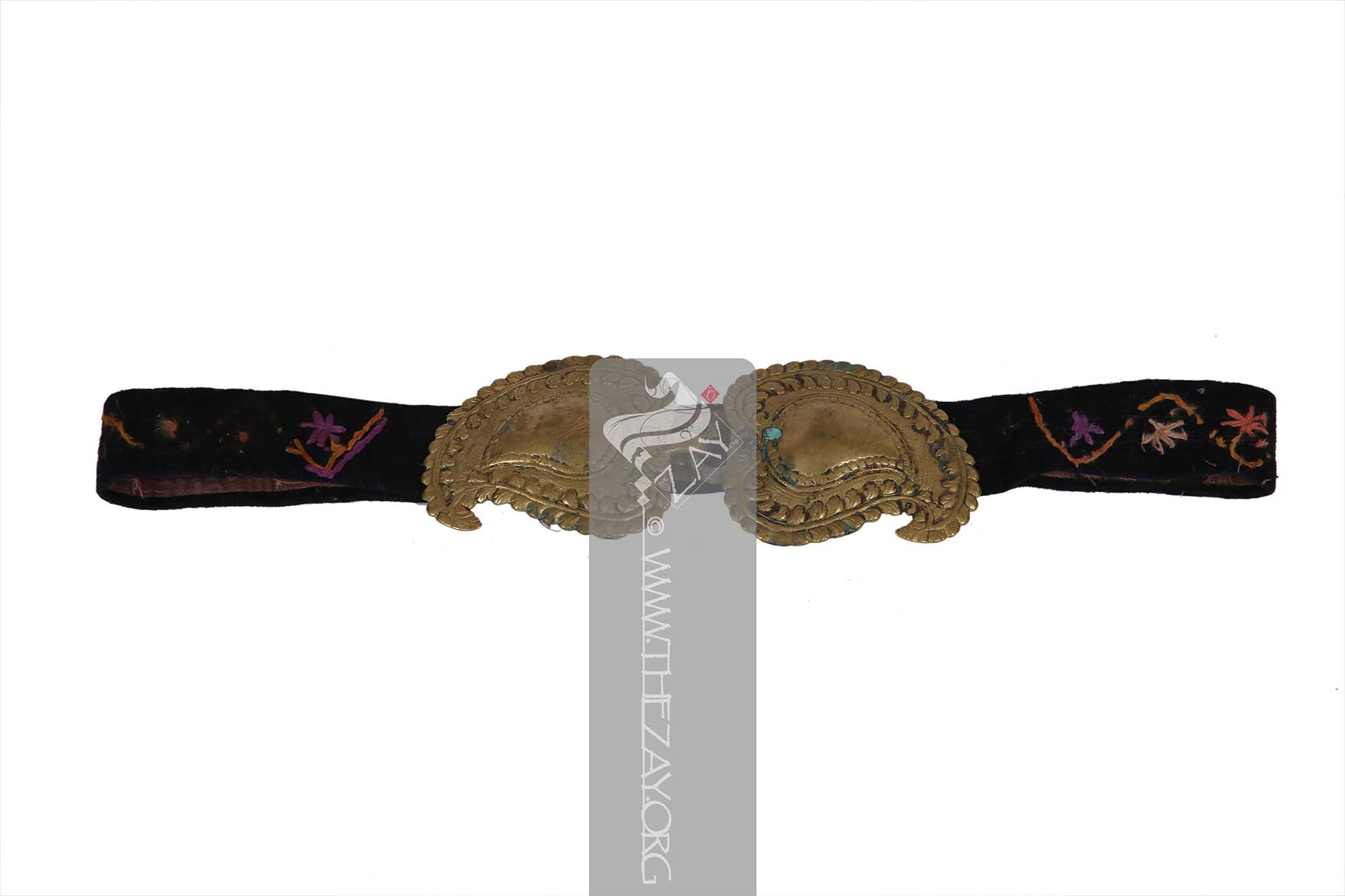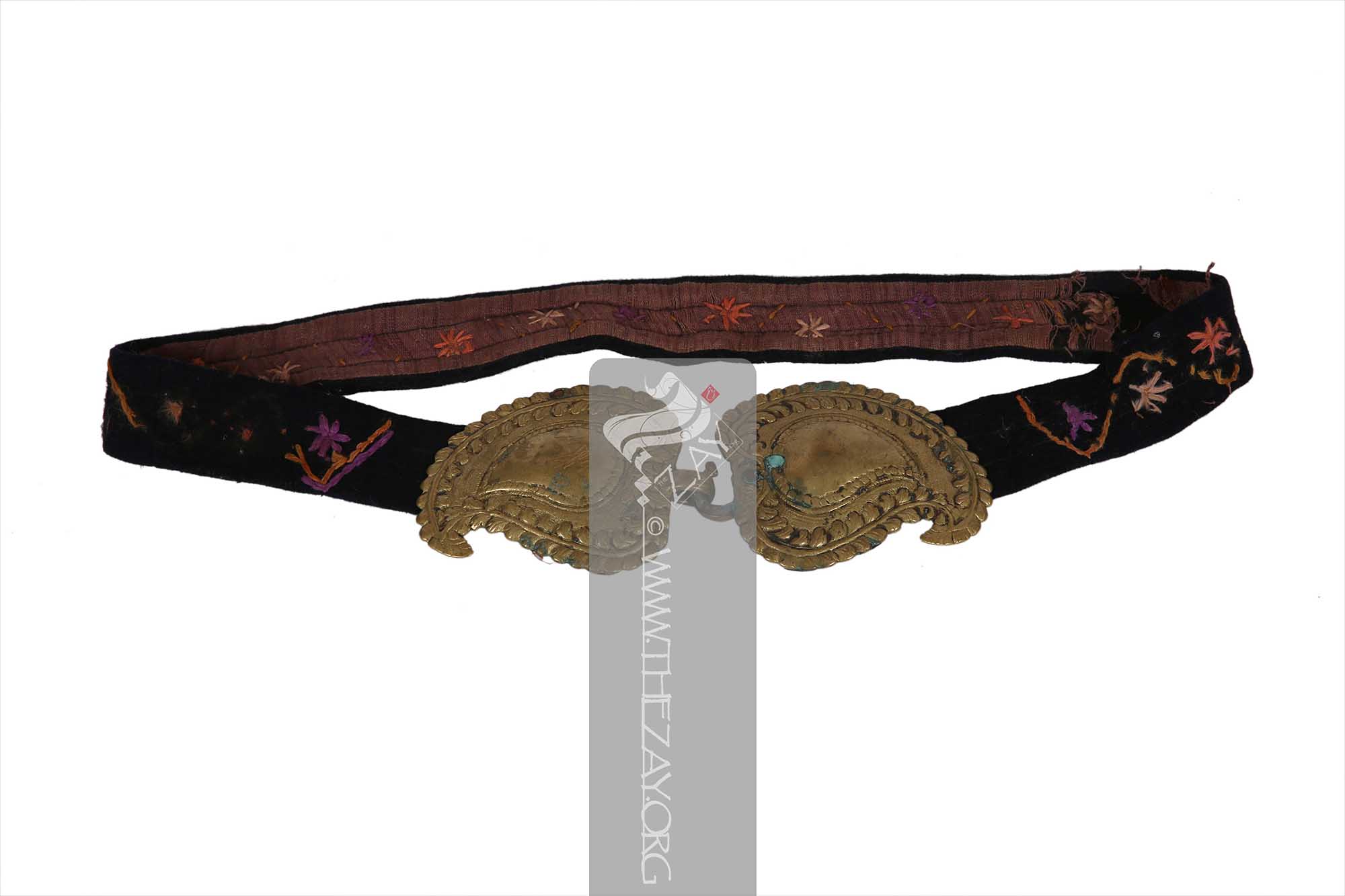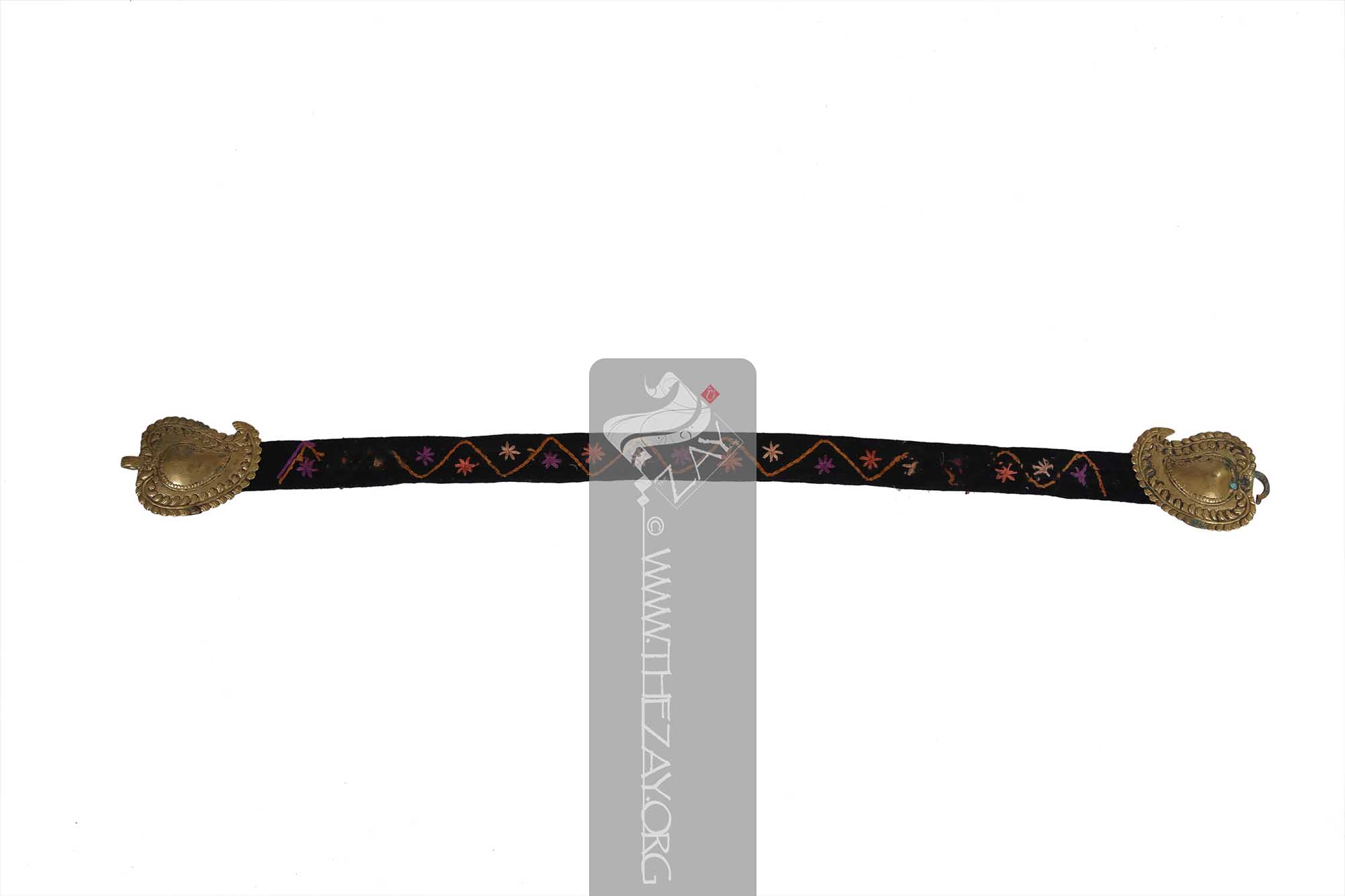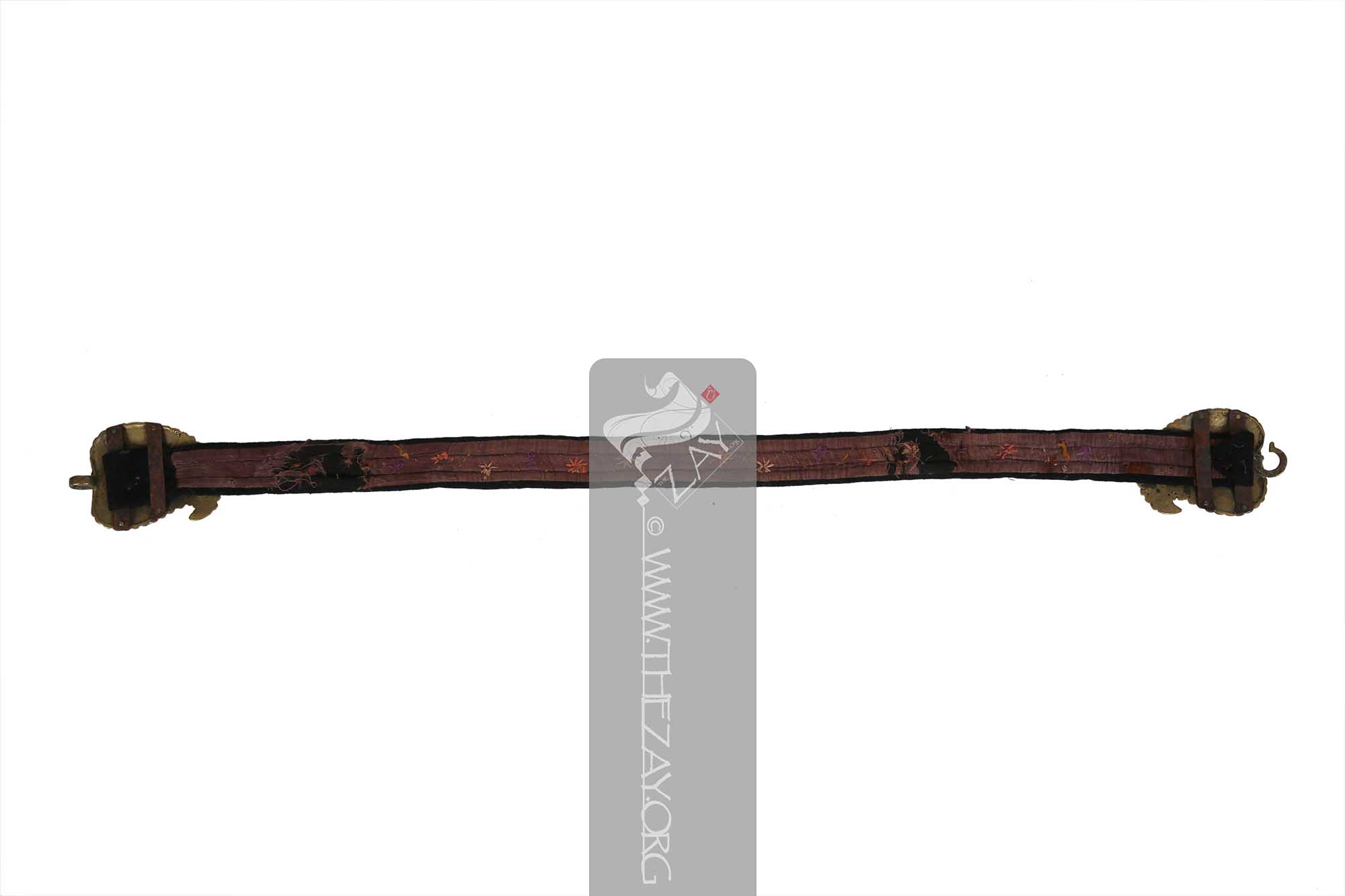Object History This piece of garment was purchased by
Dr. Reem Tariq
Ṭariq: (Arabic; Synonym: tulle_bi_talli
Tūlle_bi_tallī: (French: Tulle – a city in France where fine material for veil was first made; Turkish: tel – wire; Synonym: tariq; talli; badla; khus_dozi ), series of small metal knots made on a woven net ground as embellishment. The term is commonly used in the North African Arab region specifically in Egypt.
; talli; badla; khus_dozi ), series of small metal knots made on a woven net ground as embellishment. The term is commonly used in the Levant Arab region specifically in Lebanon.
El Mutwalli
Dr. Reem Tariq
Ṭariq: (Arabic; Synonym: tulle_bi_talli
Tūlle_bi_tallī: (French: Tulle – a city in France where fine material for veil was first made; Turkish: tel – wire; Synonym: tariq; talli; badla; khus_dozi ), series of small metal knots made on a woven net ground as embellishment. The term is commonly used in the North African Arab region specifically in Egypt.
; talli; badla; khus_dozi ), series of small metal knots made on a woven net ground as embellishment. The term is commonly used in the Levant Arab region specifically in Lebanon.
el Mutwallī: Founder (CEO) of the Zay
Zay: (Arabic: costume, Pl. azyaā’), a set of clothes in a style typical of a particular country or historical period. Initiative, a public figure, speaker and author. An expert curator and consultant in Islamic art and architecture, interior design, historic costume, and UAE heritage. as a set of ensembles from an independent dealer, in Istanbul in 2021 to add to and enhance The
Zay
Zay: (Arabic: costume, Pl. azyaā’), a set of clothes in a style typical of a particular country or historical period. Initiative Collection.
Object Features This is a belt or waistband (
kusak
Kusak: (Turkish), a wide belt, sash or girdle worn around the waist to secure clothing. Typically made of fabric, leather, or embroidered material, it serves both practical and decorative purposes by adding a touch of elegance to traditional Ottoman attire. ) constructed of a black felt fabric with (
paisley
Paisley: (Scottish Gaelic, Pàislig: a town in Scotland), often called buta, boteh, amli, or kalgi in the subcontinent and kazuwah in Arabic, is a Persian tear drop motif with a curved end specially in textiles. Its popularity and subsequent local production in 18th century at Paisley are responsible for its nomenclature.) shaped bronze buckles with hook and eye fastening and iron loops.
The felt field is embroidered in with possibly woollen
floss
Floss: (Old French: flosche – nap of velvet), is a type of silk fibre obtained from the cocoons of wild silkworms. It is characterized by its long, fluffy fibers that are not tightly woven, making it ideal for use in various textile applications such as embroidery, lace-making, and sewing. threads in orange, lavender, pastel
coral
Coral: (Greek: korallion, probably from Hebrew: goral – small pebbles), is a pale to medium shade of pink with orange or peach undertones, resembling the colour of certain species of coral., and beige. It has a central wavy vine executed in (
satin_stitch
Satin_stitch: (Synonym: Damask Stitch), is a type of flat embroidery stitch that creates a satin like smooth and shiny surface by closely spaced stitches, covering an entire area or shape.) style embroidery and has small star-shaped flowers along the troughs.
The underside is lined with a thin
gauze
Gauze: (English), very fine wire mesh transparent fabric of silk, linen, or cotton.-like cotton fabric which was originally possibly of a pale pink shade. Part of the lining is completely frayed. The buckles are made of solid bronze, possibly die cast in the shape of a horizontal
paisley
Paisley: (Scottish Gaelic, Pàislig: a town in Scotland), often called buta, boteh, amli, or kalgi in the subcontinent and kazuwah in Arabic, is a Persian tear drop motif with a curved end specially in textiles. Its popularity and subsequent local production in 18th century at Paisley are responsible for its nomenclature. motif mirroring one another with iron loops on the underside through which the fabric of the belt could be passed and adjusted.
The base of the buckle has a hook and eye feature also in bronze for fastening. The inside of the
paisley
Paisley: (Scottish Gaelic, Pàislig: a town in Scotland), often called buta, boteh, amli, or kalgi in the subcontinent and kazuwah in Arabic, is a Persian tear drop motif with a curved end specially in textiles. Its popularity and subsequent local production in 18th century at Paisley are responsible for its nomenclature. features intricate foliage design. The buckles have parts that have been tarnished with patina and the iron loops on the underside are completely rusted. In Turkish, the
paisley
Paisley: (Scottish Gaelic, Pàislig: a town in Scotland), often called buta, boteh, amli, or kalgi in the subcontinent and kazuwah in Arabic, is a Persian tear drop motif with a curved end specially in textiles. Its popularity and subsequent local production in 18th century at Paisley are responsible for its nomenclature. design is also known as the Indian knot or "hindi bukağı" as it was often used in Indian textiles and was thought to resemble a knot.
The previous collector pointed at its possible Balkan origin dating back to the 19th century when the region was under Ottoman rule and influence which is quite possible given the sizeable Balkan population in the northwestern provinces and regions such as Marmara as well as urban centres such as Eskeshehir and Kütahya in the interiors.
More InfoAn examination of historical artworks from Iran reveals a progressive evolution in the style of waist girdles which eventually evolved into an Ottoman
kusak
Kusak: (Turkish), a wide belt, sash or girdle worn around the waist to secure clothing. Typically made of fabric, leather, or embroidered material, it serves both practical and decorative purposes by adding a touch of elegance to traditional Ottoman attire. .
During the early 16th century, it was customary for individuals in Iran to wear a leather strap adorned with metal plaques. Subsequently, this design gave way to a narrower textile band fastened with gold clasps.
Thomas Herbert, a member of an English embassy to Iran in the late 1620s, made noteworthy observations regarding the length of these sashes and the significant variations in their materials.
According to him individuals of different social statuses distinguished themselves through the quality of their band and the accompanying plain, but opulent fabric towels used underneath them.
These fabrics were often made of silk and gold for nobilities, while the merchants wore them woven with silver, and lower-ranking individuals wore them in silk and wool.
Similar sashes were also prevalent in the realms, adjacent to the Safavid cultural sphere – Ottoman and Mughal. By the late 17th century, this fashion trend had not just been widely accepted in the Ottoman Empire but transcended beyond it. It had reached parts of eastern Europe, such as Poland and Russia.
Thus, the courtiers in these regions embraced the use of textiles and fashion trends imported from Ottoman Turkey as status symbols. While the style of dress amongst the aristocracy in this region as well as the Ottoman Empire gradually started drawing inspiration from the West, the popularity of the sash endured as an indelible mark of Ottoman influence.
Links
- Cangökçe, Hadiye, et al. Osmanlı İmparatorluğu’nun Son Döneminden Kadın Giysileri = Women’s Costume of the Late Ottoman Era from the Sadberk Hanım Museum Collection. Sadberk Hanım Museum, 2010.
- Küçükerman, Önder, and Joyce Matthews. The Industrial Heritage of Costume Design in Turkey. GSD Foreign Trade Co. Inc, 1996.
- AĞAÇ, Saliha, and Serap DENGİN. “The Investigation in Terms of Design Component of Ottoman Women Entari
: (Turkish; Synonym: Antari), a traditional Turkish long jacket-like unisex garment worn during the Ottoman era. It often featured an open front with long sleeves and was worn over an undershirt and a pair of trousers and was sometimes layered by a short waist or hip-length jacket. in 19th Century and Early 20th Century.” International Journal of Science Culture and Sport (IntJSCS), vol. 3, no. 1, Mar. 2015, pp. 113–125. https://dergipark.org.tr/tr/download/article-file/91778
- Parker, Julianne. “OTTOMAN AND EUROPEAN INFLUENCE IN THE NINTEENTH-CENTURY BRIDAL COLLECTION OF THE AZEM PALACE, DAMASCUS, SYRIA.” Journal of Undergraduate Research: Brigham Young University, 18 Sept. 2013. http://jur.byu.edu/?p=6014
- Koç, Adem. “The Significance and Compatibility of the Traditional Clothing-Finery Culture of Women in Kutahya in Terms of Sustainability.” Milli Folklor , vol. 12, no. 93, Apr. 2012. 184. https://www.millifolklor.com/PdfViewer.aspx?Sayi=93&Sayfa=181
- Micklewright, Nancy. “Late-Nineteenth-Century Ottoman Wedding Costumes as Indicators of Social Change.” Muqarnas, vol. 6, 1989, pp. 161–74. JSTOR, https://doi.org/10.2307/1602288. Accessed 13 July 2023.
- Micklewright, Nancy. “Looking at the Past: Nineteenth Century Images of Constantinople and Historic Documents.” Expedition, vol. 32, no. 1, pp. 24–32. https://www.penn.museum/documents/publications/expedition/pdfs/32-1/micklewright.pdf
- Ozgen, Ozlen, et al. “Henna Ritual Clothing in Anatolia from Past to Present: An Evaluation on Bindalli.” Textile Society of America Symposium Proceedings, 2021, https://doi.org/10.32873/unl.dc.tsasp.0122.
- https://artsandculture.google.com/story/traditional-jewellery-and-dress-from-the-balkans-the-british-museum







